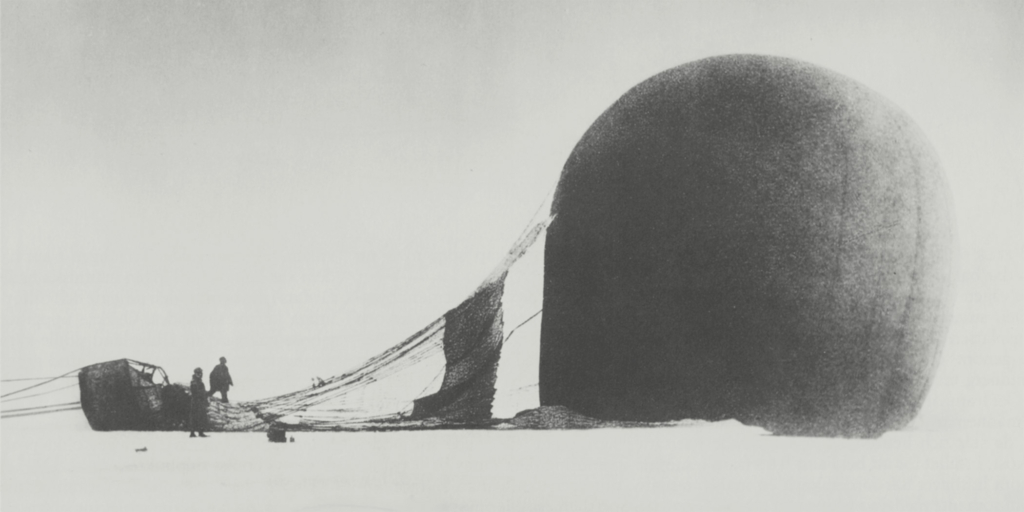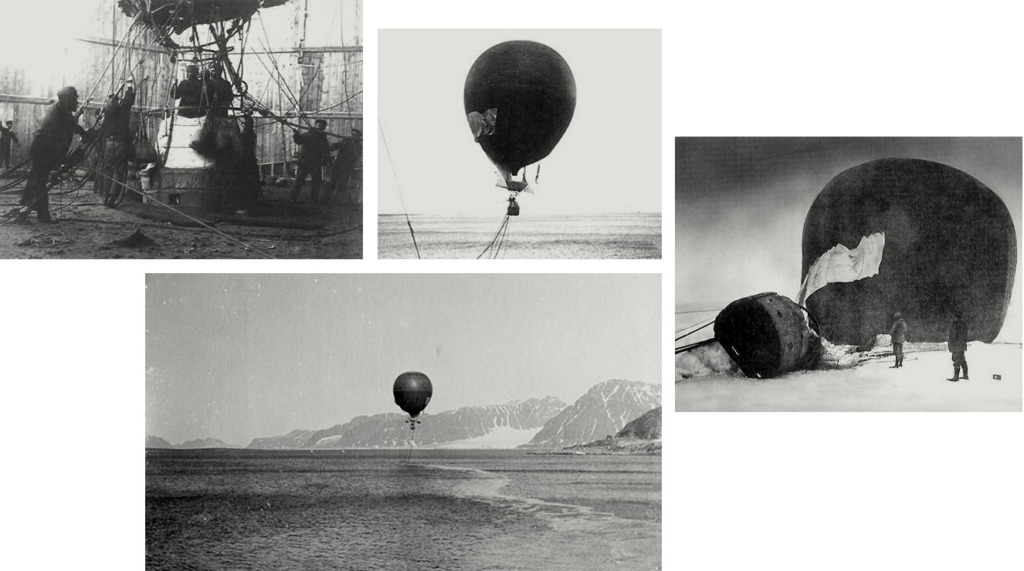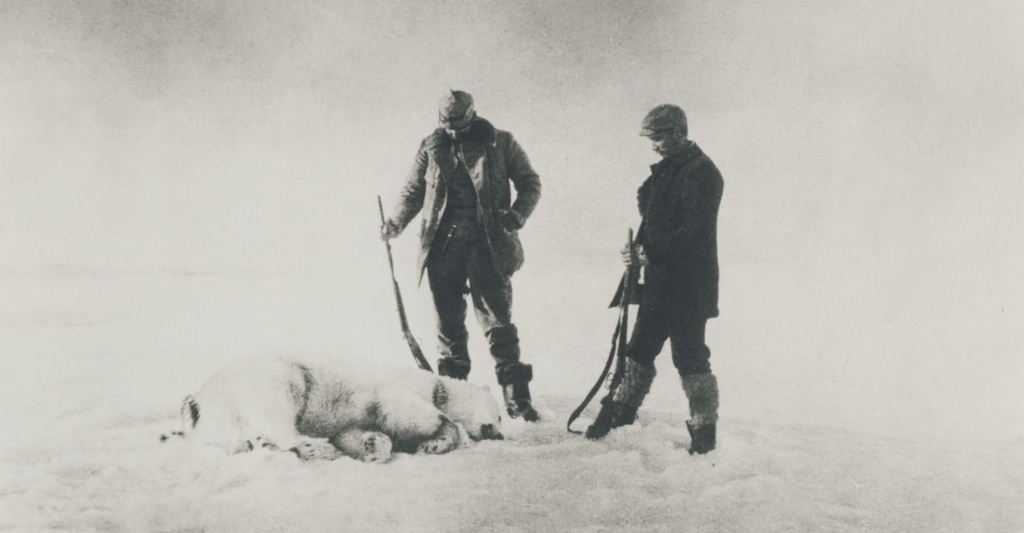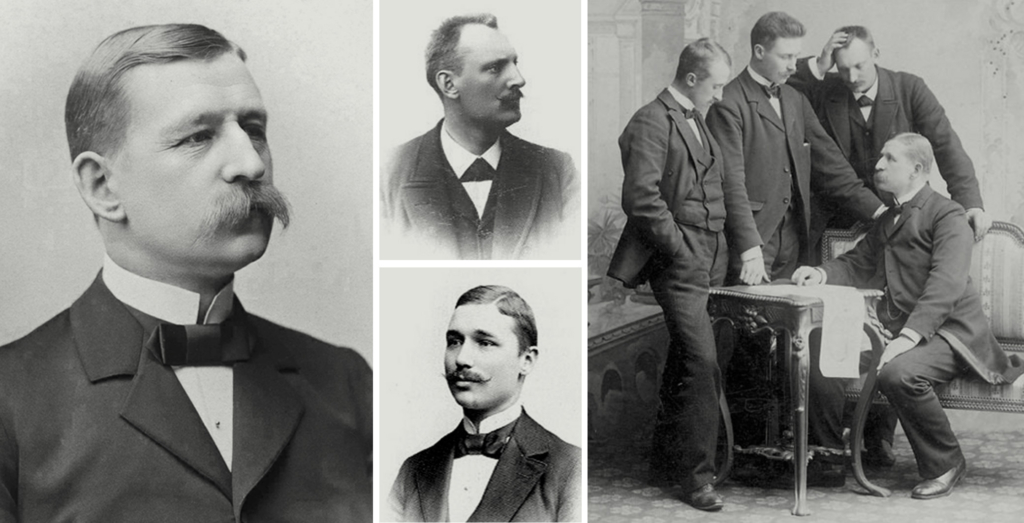This article is brought to you by Datawrapper, a data visualization tool for creating charts, maps, and tables. Learn more.
With a balloon toward the North Pole
One of the unsuccessful attempts to reach the North Pole

Hi, this is Anna. At Datawrapper, I’m responsible for the basemaps you can find in our choropleth and symbol map editors. This summer I read a book about one of the expeditions made in the second half of the 1800s to be the first to reach the North Pole. It’s called “The Expedition. A love story“ and is written by the researcher Bea Uusma. Her book inspired me to write this Weekly Chart about the first expedition to the North Pole with a hydrogen balloon.
The second half of the 1800s was the golden age of Arctic Exploration. Many people tried to be the first person in recorded history to reach the North Pole. Among them: the Swedish engineer Salomon August Andrée, together with Knut Frænkel and Nils Strindberg. Andrée was an engineer who specialized in hydrogen balloons – and he was convinced that the best way to reach the North Pole was by, you guessed it, hydrogen balloon.
After several years of research and fundraising, the team could start in 1897. The hydrogen balloon named the Eagle took off from Danskøya on Spitsbergen on the 11th of July with good wind conditions from the southwest.
But the expedition was off to a bad start. Almost immediately, the Eagle was out of balance, flying way too high and losing hydrogen gas faster than expected. Despite the problems, the expedition continued and traveled relatively steady for 10 hours and 29 minutes – until the weather changed suddenly. When it started to rain, the fabric of the balloon got soaked and weighed down. The remaining 41 hours of the flight were bumpy and the Eagle lost course. They touched ground several times, before the inevitable final crash on July 14th.

Reaching the North pole was not an option for the expedition anymore. Instead, Andrée, Frænkel, and Strindberg decided to leave the Eagle and take the camera, and as much equipment and food they could carry.
Before the expedition started, depots of food and ammunition had been placed in case of an emergency on both Sjuøyane and Franz Josef Land. On July 22, the expedition started moving east by foot over the ice, towards the bigger depot on Franz Josef Land. On August 4th, they realized the ice was drifting in the opposite direction, bringing them westwards. The goal changed to Sjuøyane, with an estimated travel time of six to seven weeks to get back to safety.

But the packed ice was extremely difficult to get through and slowed them down. On September 12, they decided to set up a winter camp. Based on the daily observations of position, the drifting ice would now bring them south. Unfortunately, the team had to change plans again: The ice below the camp started to crack on October 2nd, caused by the pressure from the nearby island Kvitøya. The best option was to set up a new winter camp on the island. On the 6th of October, they reached Kvitøya and started building a new campsite.
Two days later, no more diary entries were written.
Researchers assume that all the members were dead within a few days after setting up the camp at Kvitøya. Most recent findings suggest that Nils Strindberg and Knut Frænkel were attacked by ice bears, and that the expedition leader Salomon August Andrée committed suicide.

For 33 years, nobody knew what happened to the Andrée expedition. Only in 1930, a Norwegian research ship discovered the remains of the expedition, finding log books, diaries, and undeveloped films. They give us not only a detailed description of the expedition, positioning, and weather conditions, but also their thoughts – especially the very personal diary of Nils Strindberg, which was dedicated to his fiancee, Anna Charlier:
"On an ice floe: 82 38,7 N. br, 29 40 E fr Grw.
Nils Strindberg
Yes my dear friend, now your Nils knows what it means to walk on the polar ice. At the start, we had a little mishap. When we were about to cross from our ice floe with the first sledge, it went sideways and came in. It was with difficulty that we managed to clear it. I got down to my knees and held on to the sled so that it would not sink. Andrée and Frænkel went over to the other ice floe and finally, we managed to get the sled up. But my bag that was on the sled is probably wet inside, and there I have all your letters and portraits. Well, what are you going to think this winter? That's my only concern.”
Despite never reaching the North Pole, the Andrée expedition tells a fascinating story of the determination to explore the unknown, based on research and assumptions about the weather conditions made from a desk in a warm office.
On May 12, 1926, the Norwegian explorer Roald Amundsen was the first recorded person to reach the North Pole. He went there by aircraft.
Thanks for reading! I hope you enjoyed learning about this expedition as much as I did. Next Thursday, you can expect a Weekly Chart from our designer David. See you then!




Comments